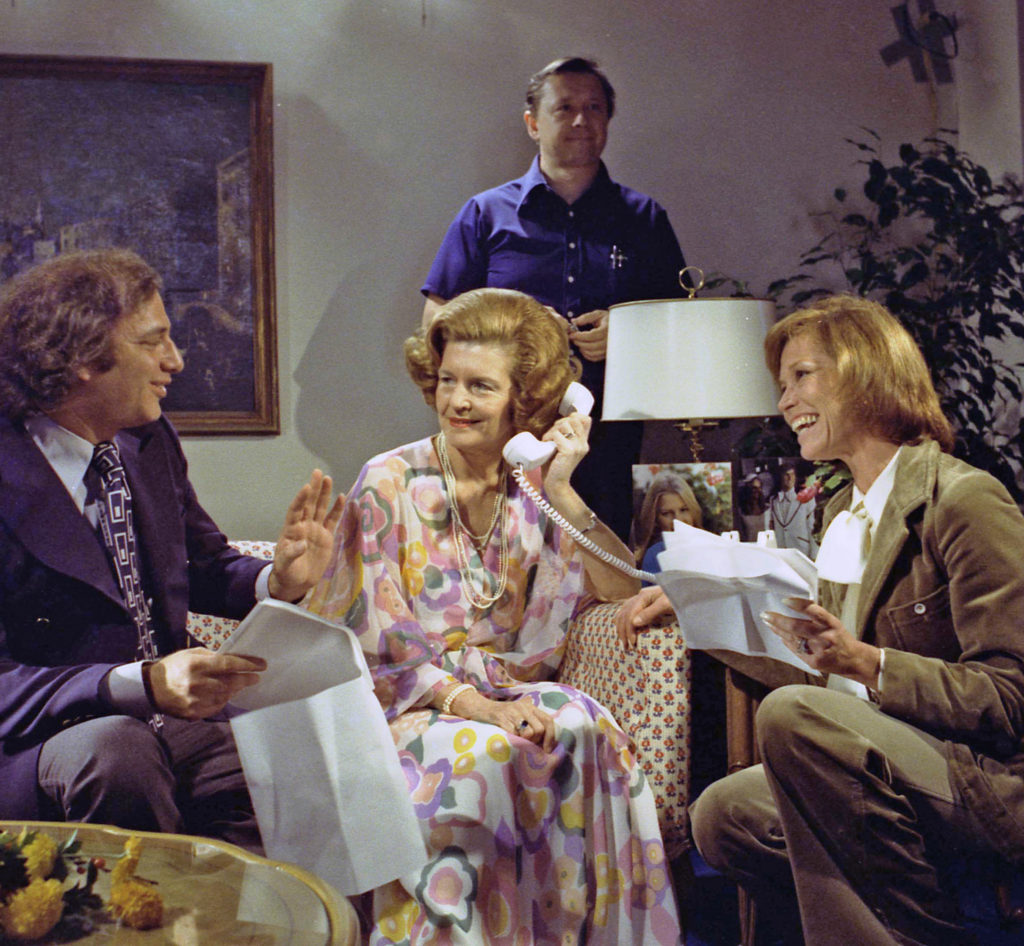
That Seventies Show: Two weeks before Thanksgiving in 1975, Mary Tyler Moore and Betty Ford made some political TV history.
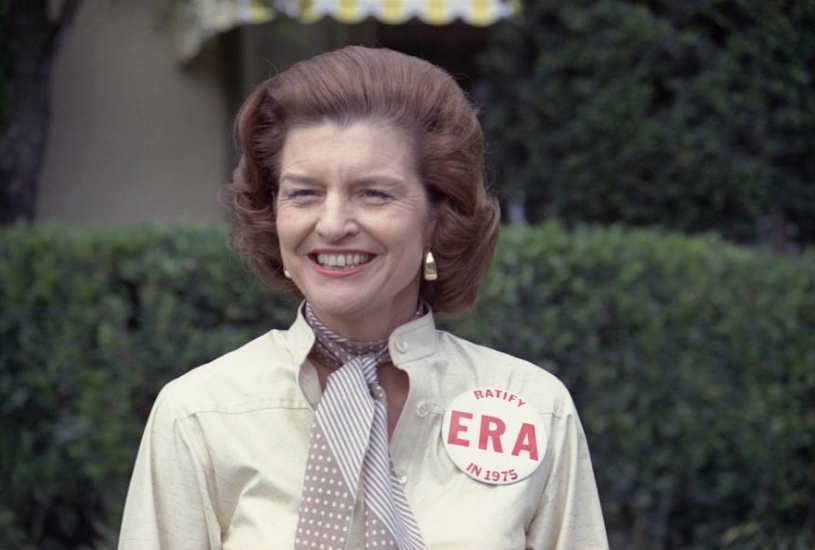
Seventies Feminist First Lady.

Seventies Feminist TV Star.
Mary and Betty.
Plain names, but when associated with two particularly famous women, both names can still become vivid enough to instantly recall their smiling wit and immediately place them in our collective memories, even for those not yet born or cognizant in that brief sliver of a sweet spot, the happy, funky mid-Seventies after Vietnam and Watergate, but before the Energy Crisis and Iranian Hostages.
Wednesday’s news that actress and producer Mary Tyler Moore had died at age 80, after enduring a life of late-onset diabetes is calling forth recollections of her iconic roles, specifically in two series, The Dick Van Dyke Show and The Mary Tyler Moore Show.
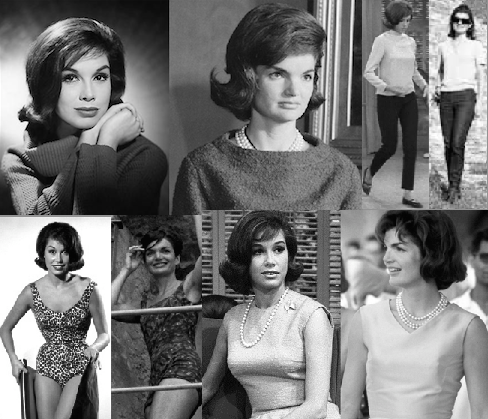
In seeking to depict the typical American housewife of the early 1960s, Mary Tyler Moore’s character Laura Petrie referenced the Jackie Kennedy look.
If her role on the Dick Van Dyke Show as suburban housewife Laura Petrie somehow seemed to strike an immediate visual authenticity, it was because the character was doing what seemingly all American housewives at the time were doing – copying the physical appearance of the popular First Lady at the time, Jackie Kennedy.
By the time of the show’s premier on October 3, 1961, just eight and a half months after the January 20, 1961 inauguration of John F. Kennedy, the new First Lady had become an international sensation, her flip bouffant, skinny pedal pusher pants, pearls, sleeveless dresses had become the fashion rage.
For the first time, a figure not of the entertainment industry was suddenly featured on the cover of movie star magazines, blurring the line between politics and acting, Washington and Hollywood. A First Lady was placed at the pinnacle of the new pop culture mix. In later years, both Mary Tyler Moore and Jacqueline Kennedy Onassis acknowledged the mirroring between their public personae.
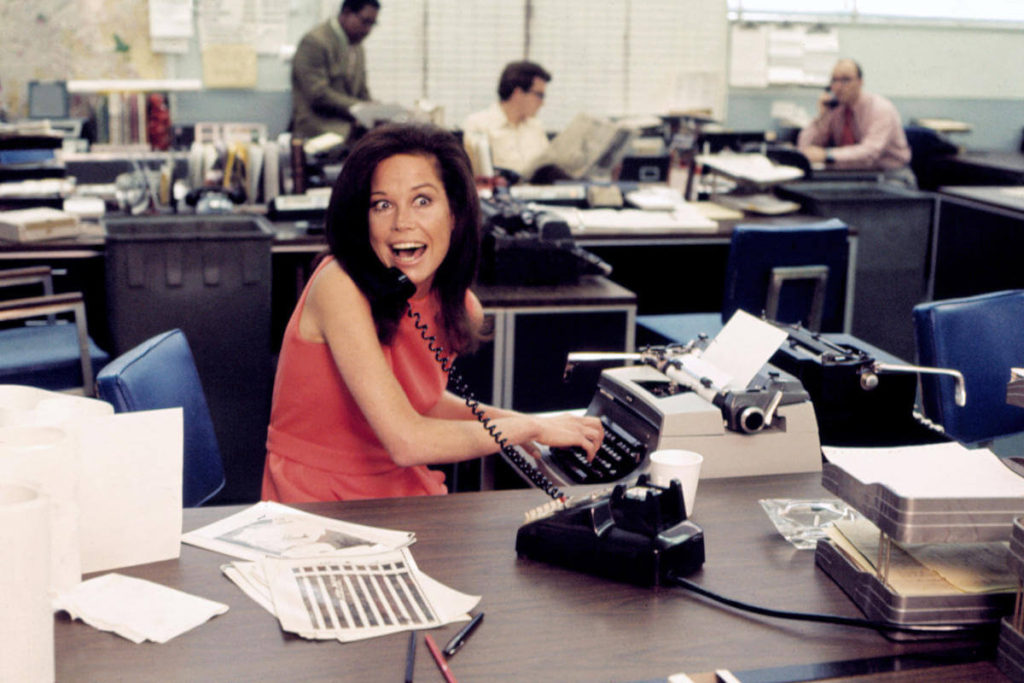
Mary Tyler Moore as Mary Richards, multi-tasking at her desk.
It was, however, the actress’s hit show The Mary Tyler Moore, which premiered in 1970, that made her as potent a cultural icon as any First Lady.
By not merely starring in, but also conceiving and shaping the show’s narrative arc, Mary Tyler Moore gently translated the realities of the emerging Women’s Liberation movement, not by its legal initiatives but rather by its societal shifts towards greater gender equity.
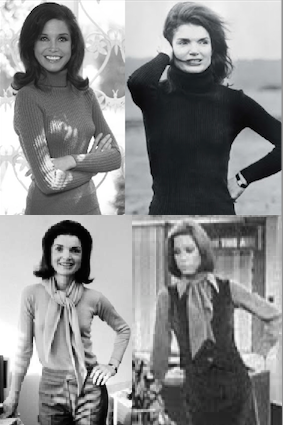
Working Mary and working Jackie, updating a decade later.
There was again some similarity in terms of visual style and even some subtext to the character of the single Mary Richards working in broadcast journalism to reports of the the now-single Jackie Kennedy Onassis, working in publishing.
If was, however, really nothing more than a matter of style rather than substance that a comparison could be based on between the millionairess widow and the unmarried young news producer.
That same year, however, Mary Tyler Moore would be joined by an authentic cultural icon of the Women’s Liberation movement, another First Lady, Betty Ford. Theirs was more a matter of shared substance, rather than style. And for one brief moment, they melded in the public imagination.
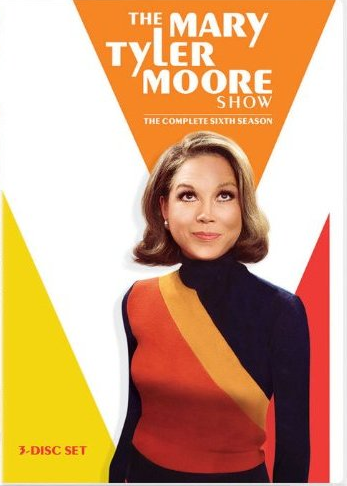
A publicity shot image of The Mary Tyler Moore Show for the 1975-1976 season.
The last three seasons of the Mary Tyler Moore Show, 1974-1975, 1975-1976 and 1976-1977 covered the entire Ford presidency, which began in August of 1974 and ended in January of 1977. And right in the middle of her tenure as presidential spouse, Betty Ford did something none of her predecessors had dared to do.
The real First Lady appeared on television, not guiding a tour of the restored White House as Jackie Kennedy had, nor guiding a tour of the nation’s capital city parks an monuments as Lady Bird Johnson had, but “acted” in a cameo appearance as herself in the unreal realm of a television sitcom, then in a season with a 21.9 Nielsen rating.
Her appearance was a brief minute or so, consisting of two scenes of just a few lines, but it was a seminal moment in the long courtship of politics and entertainment, begun at the dawn of Hollywood sixty years earlier.
It had come about simply enough, with a connection from a producer that led to the First Lady’s Press Secretary. And Mrs. Ford, a self-admitted “ham,” said yes.
The scheduled shoot, which took place across Lafayette Square from the White House on November 17, 1975, at a suite in the Hay-Adams Hotel, was only to be fifteen minutes in length. The First Lady, however, was an hour and a half late.
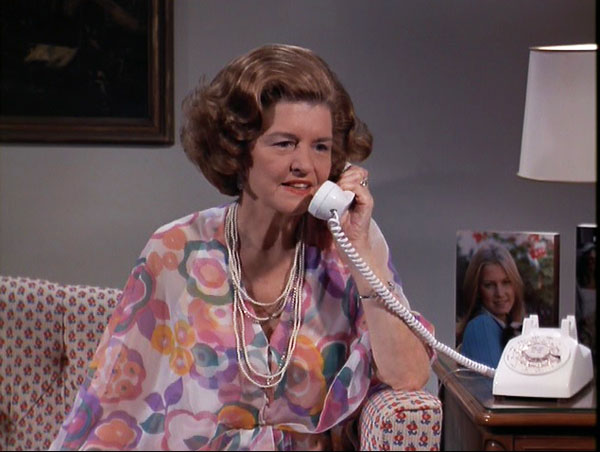
Betty Ford during the filming of her cameo appearance on MTM.
Airing on January 10, 1976, the episode called “The Seminar” was based on the premise of Mary and her boss Lou Grant attending a broadcast seminar in Washington, D.C., with him promising to show her capital society among the movers and shakers he brags as being his friends.

Mrs. Ford’s second brief scene.
The promised gathering seems to fall apart, and Mary ends up going to a party and meeting minor government figures.
She returns after the party and he regales her with tale of a party in his hotel room with astronaut John Glenn, journalist Eric Sevarid, widow Ethel Kennedy, former Vice President Hubert Humphrey, and the President and Mrs. Ford. The phone rings for Mr. Grant.
It’s the First Lady. So he tells Mary, then hands her the phone. Mrs. Ford’s sequence appears at minute 4:00:
Several people, including feminist Gloria Steinem observed of Mary Tyler Moore a characteristic also often made of Betty Ford: “You don’t feel you’re meeting a different person offstage, but you don’t feel you’re meeting a phony person either.”

First Lady Betty Ford in the Cabinet Room, congratulating her husband President Gerald R. Ford as he signs the International Year of the Woman proclamation in March 1975, joking to him, “You’ve come a long way, baby!”
In her show Mary Tyler Moore took on the very same issues that Betty Ford addressed at the same time as First Lady: equal-pay-for-equal-work, pre-marital sex, women’s health, homosexuality and, with ironic foreshadowing for the latter, prescription drug addiction.
As the series was coming to an end, along with her husband’s presidency, Mrs. Ford observed of Mary Tyler Moore, “She’s terrific, talented and a joy to work with.”
During the taping, however, the actress had suspected something might be wrong. She later wrote:
“It was a short scene but she had trouble remembering her dialogue, even as I helped her out by giving her cues while standing just to the side of the camera. I felt so said that this lovely, warm lady couldn’t master it on her own. But the scene on film was delightful, and I was told that she remembered her moment of stardom on our show as having been “so much fun.”
In later years, Mary Tyler Moore suggested that Mrs. Ford’s had been an “inebriated debut,” another account claiming she was “slurring.”
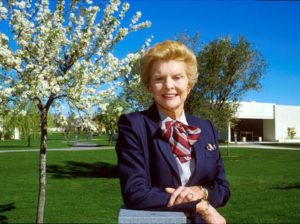
Betty Ford n front of the recovery center that bears her name.
In 1978, a year after the show ended and the Fords had retired to Rancho Mirage, California, the former First Lady entered Long Beach Naval Hospital for prescription drug and alcohol addiction. She decided to be publicly honest about her problem. Just as she had done when she disclosed her breast cancer and mastectomy, Betty Ford helped remove the intense stigma especially attached to women with addiction.
Women like her brief, former co-star, Mary Tyler Moore.
In 1984, only two years after the former First Lady had co-founded the southern California recovery center named for her, “The Betty Ford Center” she learned that Mary Tyler Moore was facing her own demons with alcohol. As a writer then working with the actress put it, Betty Ford made a “phone call that saved Mary’s life.”
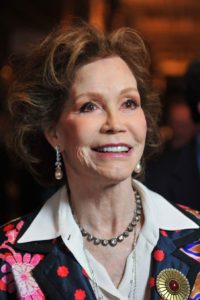
Mary Tyler Moore at the 2012 tribute to her former co-star Betty White.
As she began five weeks of treatment at the Betty Ford Center, Mary Tyler Moore found herself especially inspired by the former First Lady who regularly came to meet with, speak to and counsel patients.
“There was something about Betty Ford that made me feel I could be her sister (except for the First Lady business.) She was first and foremost a lady (kind, well-mannered, gracious), anything but the commonly held image of a woman alcoholic. As she took the floor at the center’s microphone, I recalled my experience with her while filming…Now, here we were in role reversal – she was extending the helpful hand to me, and while at first I felt like an errant schoolgirl, as I identified with her story and digested her almost brutal honesty, I was able to grow emotionally.
An alcoholic woman, in most people’s eyes, was one who had just really gotten sloppy, gotten dirty. Being able to come out and talk honestly about that (alcoholism) gave a lot of people the opportunity to look at themselves carefully and say, ‘Hey, yes I look good, my clothes are nice and I’m warm and delightful, but I’m also an alcoholic.”

Moore as the dancing Happy Hotpoint in a 1953 television commercial.
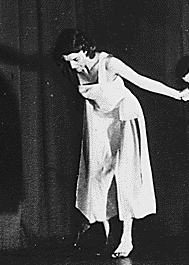
Betty Bloomer dancing with Martha Graham’s troupe, 1938.
There were, in fact, many qualities that they shared, including fresh wit, a desire to be perfect “good girls,” and a compulsion to tell the truth, being uncomfortable with even fibs (though both readily admitted to initially resisting the fact that they were both alcoholic).
Both women also discovered a joyous bond they shared and indulged in their whole life.
Dance.
Mrs. Ford studied modern dance with Martha Graham and Mary Tyler Moore’s passion for dance had her aspiring to do so professionally.
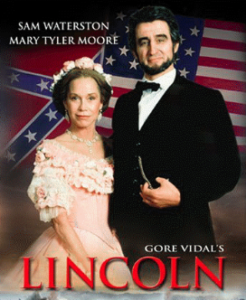
Mary as Mary.
Initially cast as the “Happy Hotpoint” elf, she frolicked and gamboled in early 1950s television commercials selling appliances. It proved to be her career break in acting. On numerous occasions as First Lady in that mid-Seventies era, Betty Ford couldn’t resist busting a dance move, whether with a ballet troupe in China or atop the Cabinet table. One Mary Tyler Moore Show cast member recalled that during their rehearsal breaks, the actress loved corralling cast and crew for a bit of dancing on set. This shared impulse revealed a natural joy that was at the core of both women.
As for her remark that she related to Betty Ford “except for the First Lady business” Mary Tyler Moore was also a bit modest.
After all, in 1988, six years after her successful recovery at the Betty Ford Center, the actress depicted First Lady Mary Todd Lincoln in the mini-series Lincoln.
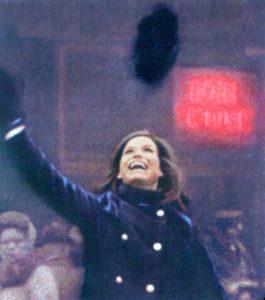
Mary Tyler Moore throws her tam in the air in the opening scene of “The Mary Tyler Moore Show,” which aired on CBS from 1970 to 1977. Moore played a fictional Minneapolis assistant TV news producer named Mary Richards who navigates a career, friendships and single life. (CBS)
Categories: First Ladies, Hollywood, The Fords
Tags: Betty Ford, Betty Ford Center, Mary Tyler Moore, recovery, The Seventies
 Jackie & The Nixons: Mrs. Kennedy Returns to the White House, With New Images of the Visit
Jackie & The Nixons: Mrs. Kennedy Returns to the White House, With New Images of the Visit  Jane & Jill, Potential First Ladies: Lots in Common Between the Wives of Joe Biden & Bernie Sanders
Jane & Jill, Potential First Ladies: Lots in Common Between the Wives of Joe Biden & Bernie Sanders  Liz Taylor Meets Jackie Kennedy: Tabloid Fantasy to Chance Encounter & The Only Photos of Them Together, Part I
Liz Taylor Meets Jackie Kennedy: Tabloid Fantasy to Chance Encounter & The Only Photos of Them Together, Part I  Liz Taylor Meets Jackie Kennedy: Tabloid Fantasy to Chance Encounter & The Only Photos of Them Together, Part II
Liz Taylor Meets Jackie Kennedy: Tabloid Fantasy to Chance Encounter & The Only Photos of Them Together, Part II  Melania Trump v. John Kelly: First Ladies & West Wing Personnel, A Brief History
Melania Trump v. John Kelly: First Ladies & West Wing Personnel, A Brief History  Melania Trump’ Hospitalization: What the Public Is Told About a First Lady’s Health
Melania Trump’ Hospitalization: What the Public Is Told About a First Lady’s Health
Leave a Reply